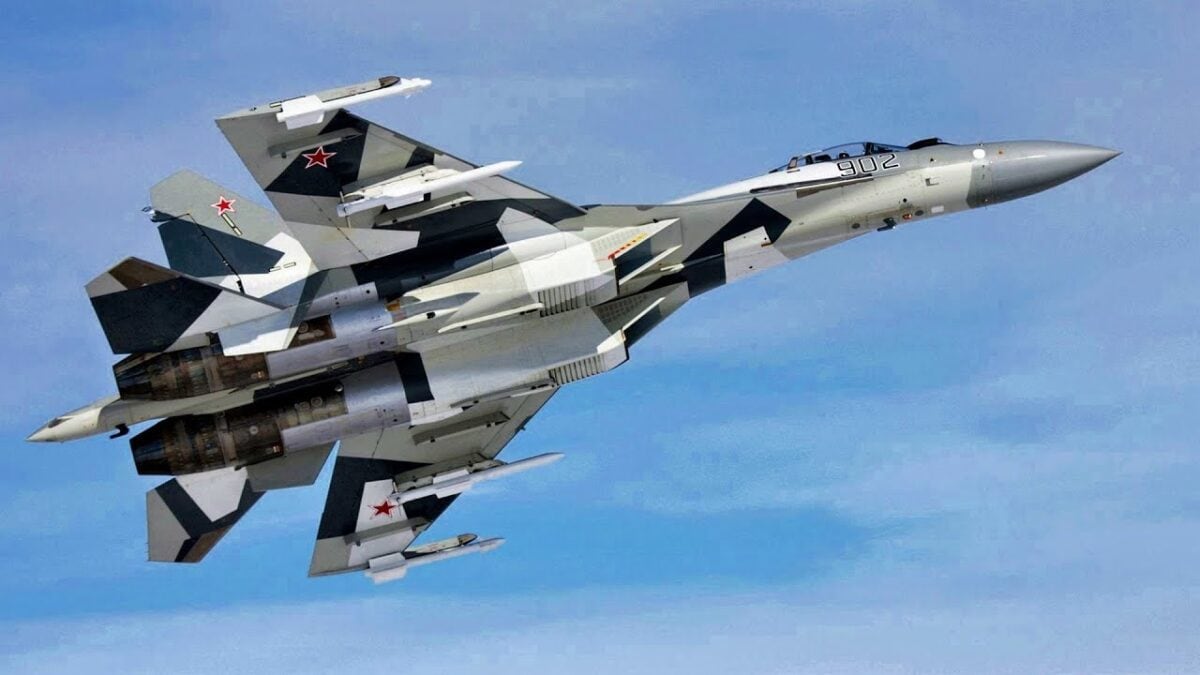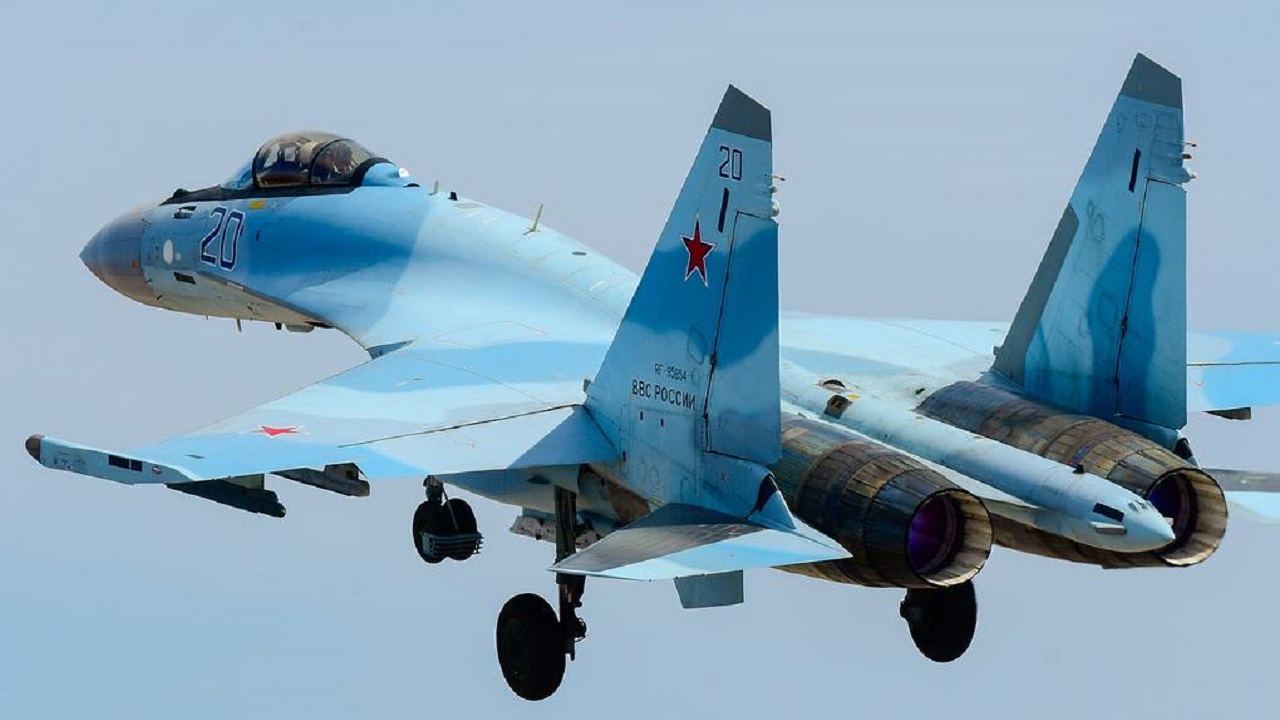If Moscow’s Sukhoi S-35 fighter had any clout as a formidable fourth-generation fighter prior to the Kremlin’s invasion of Ukraine, that has largely dissipated following an unfortunate series of events. The airframe, codenamed Flanker-E by the North Atlantic Treaty Organization (NATO), has suffered some humiliating failures in the last six months, many of which have been widely publicized. In addition to three client-states refusing or canceling Su-35 deliveries due to various defects, Russia has reportedly lost two squadrons of the latest variant in Ukraine. Moscow’s “top-of-the-line” fighter has possibly emerged as Russian President Vladimir Putin’s biggest obstacle.
The Su-35’s Origin Story
The Sukhoi-35 is directly derived from two variants of the Su-27 fighter. The soviet-era twin-engine supermaneuverable airframe was developed by the Russian defense company Sukhoi during the Cold War to provide a solid counter to America’s fourth-generation fighters including the McDonnell Douglas F-15 Eagle and Grumman F-14 Tomcat. Equipped with heavy aircraft ordinance and advanced avionics, the Su-27 was considered an upgrade to the Soviet’s air-defense arsenal. The current Su-35 has the same name designation as a previous platform that first appeared in the late 1980s. However, the existing Su-35 is a different platform altogether and features unique capabilities from its namesake.
As the second improved variant of the Su-27, the Flanker-E sports numerous enhancements. The airframe’s thrust-vectoring engines make the fighter supermaneuverable, the nozzles of its Saturn AL-41F1S turbofans can point in different directions, which protects the airframe while rolling and yawning. According to United Aircraft Corporation (UAC), the Su-35S’s manufacturer, the fighter “combines the qualities of a modern fighter (super-maneuverability, superior active and passive acquisition aids, high supersonic speed and long range, capability of managing battle group actions, etc.) and a good tactical airplane (wide range of weapons that can be carried, modern multi-channel electronic warfare system, reduced radar signature, and high combat survivability).”
The “Flanker’s” shortcomings
While Moscow has boasted that its Su-35 represents the best of the best in the fourth-generation fighter community, these types of assertions may have been exaggerated. The Flanker-E remains the only fighter in its generation not to feature an electronically scanned array (AESA) radar or Sensor fusion, making its avionics suite the weakest among its near-peers. America’s fourth-generation airframes feature these frequency-hopping actively scanned array systems, which boast higher fidelity and are more resistant to jamming. The S-35 uses an Irbis-E passive electronically scanned array (PESA) radar system instead, which does not protect the fighter by making it undetectable to adversaries.
The Su-35’s abysmal role in Ukraine
Last month, a deputy chief attached to the Ukrainian General Staff condemned Moscow’s Su-35 platform. While Brig. Gen. Oleksiy made many remarks that are probably biased, some assertions have been verified. The Gen. said that 24 Su-35s had been downed in combat by Ukrainian forces. Although this figure seems doubtful, confirmed reports of at least 2 downed Su-35s have circulated. In July, the fighter was recorded being shot down near the city of Nova Kakhovka in Ukraine’s southern Kherson region. “There is visual confirmation of the downing of the plane, the pilot ejected,” the post said regarding the $85 million dollar fighter. “In addition, during the current day, units of the anti-aircraft missile forces of the Air Force shot down 5 enemy unmanned aerial vehicles of the operational-tactical level.”
Additionally, at least two foreign customers have passed on procuring the Su-35 over the last year, according to Business Insider. “Indonesia, which had dangled an order for 11 Su-35s since the mid-2010s ultimately decided to buy Rafale or F-15EX jets instead. And Algeria, long a dedicated customer for Russian arms, passed on the Su-35 in January, citing its radar.”

Russian Su-35 fighter jet. Image Credit: Creative Commons.
Although many outlets assert the Flanker has not performed well in Ukraine, Russian-state media sources claim the fighter has shot down two Ukrainian helicopters and an obsolete Su-25 jet during the conflict. Even if these claims are true, it seems the Su-35 is at best a slightly flawed fourth-generation fighter and at worst a paper tiger.
Maya Carlin is a Middle East Defense Editor with 19FortyFive. She is also an analyst with the Center for Security Policy and a former Anna Sobol Levy Fellow at IDC Herzliya in Israel. She has by-lines in many publications, including The National Interest, Jerusalem Post, and Times of Israel.

